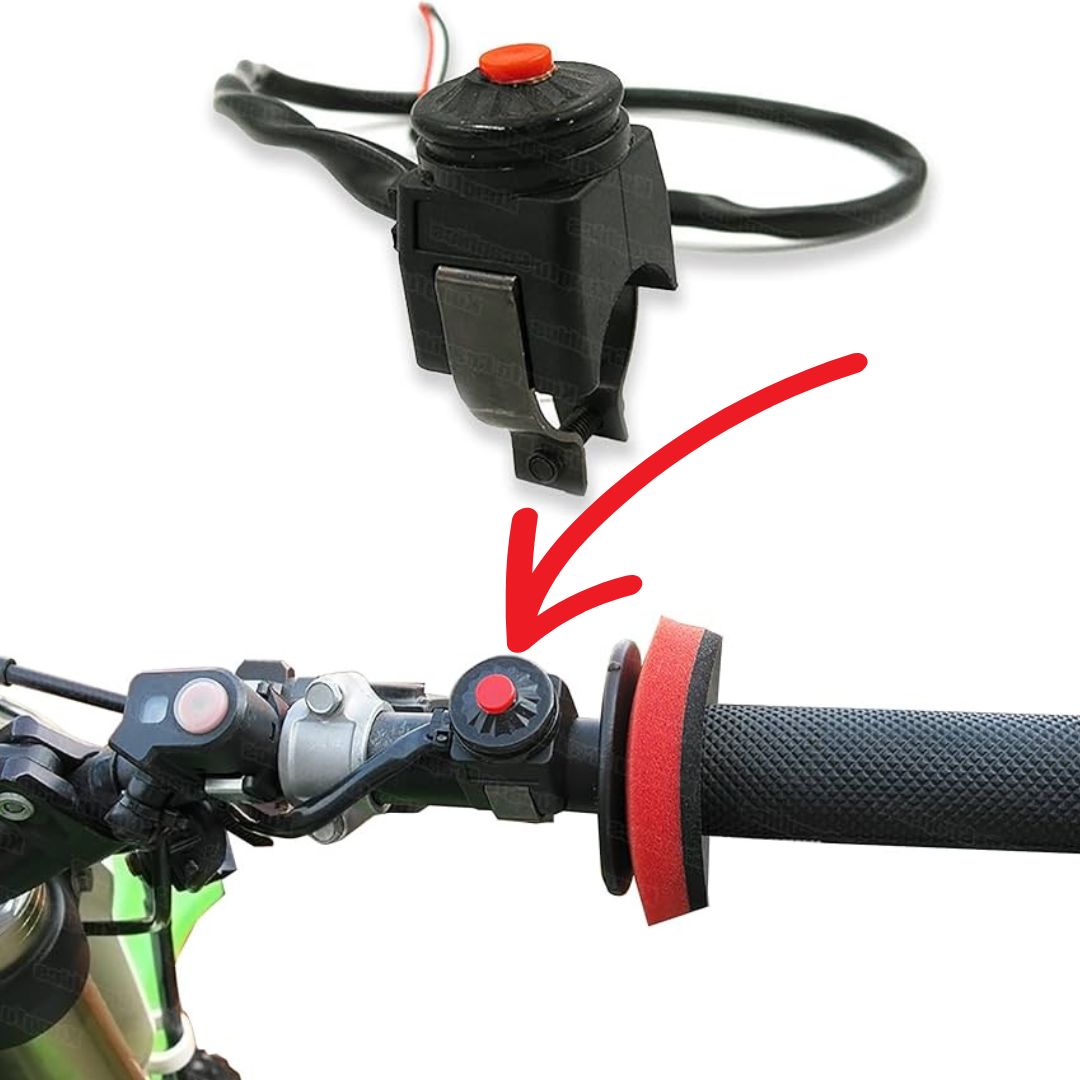
Published: 1.3.24
Updated: 29.8.24
In the world of quad biking, where thrill meets the rugged outdoors, the quad kill switch stands as a sentinel of safety.
This little device, often overlooked, plays a crucial role in ensuring the rider's well-being.
Whether you're scaling hills or navigating tricky terrains, understanding and appreciating the function of a quad kill switch is paramount.
It's not just about cutting the engine power; it's about safeguarding lives.
What is a Quad Kill Switch?
A Quad Kill Switch is a safety device found on ATVs and quads, designed to shut off the engine in case of emergencies, such as a rollover. It comes in two main types: push and pull. The push type, commonly used in ATVs, activates by pressing a button to cut the engine power, ensuring the driver's safety during a pitch or rollover situation.
Functionality of a Quad Kill Switch
Explanation of Operation
Imagine you're riding at full throttle and suddenly need to stop the engine immediately.
That's where the quad kill switch comes into play.
| Kill Switch Type | Activation Method | Best Used For |
|---|---|---|
| Push Button | Press a button to cut off the engine. | General use, easily accessible during emergencies. |
| Pull Tether | Pull a cord attached to the rider to cut off the engine. | High-risk activities, ensures engine cut off if rider falls off. |
| Wireless Remote | Use a remote control to cut off the engine. | Advanced users, offers flexibility and freedom of movement. |
Acting as a circuit breaker, it stops the engine by interrupting the electrical supply, thus preventing potential accidents.
Quad kill switches come in various forms, including tethered versions, which physically attach the rider to the switch, and wireless options, offering a bit more freedom while maintaining safety.
These switches are ingeniously linked to the quad's ignition system, ensuring that if the rider is thrown off or needs to halt the engine swiftly, the quad will comply, minimising the risk of a runaway vehicle.
Activation and Deactivation
Operating Procedures
Activating and deactivating the kill switch is straightforward but vital to the operation of the quad.
For tethered systems, attaching the tether to your person ensures that if you're separated from the quad, the engine will cut off.
Detaching it allows the quad to operate as normal. Wireless systems might use different mechanisms, such as buttons or remote controls.
Beyond the basic function of stopping the engine, these switches often incorporate additional safety features to enhance protection.
Compatibility and Installation

Compatibility with Different Quad Models
When it comes to choosing the right kill switch for your quad, compatibility is key.
Not all kill switches are created equal, and what works for one model might not work for another.
The compatibility often hinges on the quad's electrical system, handlebar design, and space for mounting the switch.
Universal kill switches are available, designed to fit a broad spectrum of quads, but ensuring that the specifications match your quad model is crucial.
It's important to check the manufacturer's recommendations and possibly consult with a professional or the quad community to find the perfect match for your vehicle.
Installation Process
Installing a kill switch, whether tethered or wireless, requires a bit of technical know-how but is generally a straightforward process.
Here's a basic guide:
| Step | Description |
|---|---|
| 1. Gather Necessary Tools | Typically, you'll need a set of screwdrivers, pliers, and possibly wire strippers and crimpers. |
| 2. Access the Ignition System | Locate the ignition wire on your quad, which is usually found near the ignition key or button. This wire is what you'll be interrupting with the kill switch. |
| 3. Connect the Kill Switch | For tethered switches, this involves splicing the switch into the ignition wire. Wireless models might require a power source, like the quad's battery, and a receiver to be mounted and connected to the ignition system. |
| 4. Secure the Switch | Mount the switch and any components securely to the quad. Tethered switches should have the tether easily accessible to the rider. Wireless switches should be in a location where they are protected yet easy to activate. |
| 5. Test the System | Before heading out, test the kill switch to ensure it effectively stops the engine. This is crucial for confirming that the installation was successful and the system is reliable. |
Importance of Quad Kill Switches

Safety Significance
The importance of a quad kill switch cannot be overstated.
It's a lifeline in emergencies, capable of preventing accidents and injuries.
Envision a scenario where a rider loses control and is thrown off the quad; the kill switch immediately halts the engine, preventing the quad from causing further chaos.
In many places, the use of these switches is not just recommended but mandated by law, underscoring their critical role in rider safety.
Maintenance and Testing

Guidelines for Maintenance
Like any safety device, a quad kill switch requires regular maintenance and testing to ensure it functions correctly when needed.
Inspecting the switch for damage, ensuring the tether (if applicable) is secure, and routinely testing the system are all part of responsible quad ownership.
Should you encounter issues, familiarising yourself with common troubleshooting steps can help keep your kill switch operational, ensuring your adventures remain safe.
Legal and Safety Considerations
 Regulatory Compliance
Regulatory Compliance
In many regions, the law requires off-road vehicles like quads to be equipped with a functioning kill switch for safety reasons.
Compliance with these regulations is not just about avoiding fines; it's about ensuring your safety and that of others.
The specifics can vary, with some places requiring tethered switches specifically, while others may allow wireless models.
Familiarising yourself with these laws before hitting the trails can help ensure you're riding legally and safely.
Rider Responsibilities

Beyond the legal requirements, riders have a moral and ethical responsibility to ensure their own safety and that of others.
Regularly inspecting your kill switch and practising how to use it in an emergency are key aspects of this responsibility.
Remember, the effectiveness of a kill switch is not just in its installation but in the rider's readiness to use it correctly.
Ethical riding practices, such as maintaining control of your quad, respecting shared trails, and being mindful of the environment, are all part of being a responsible rider.
Conclusion
In conclusion, the quad kill switch serves as an essential safety mechanism, a guardian angel for riders.
Its proper use, maintenance, and regular testing not only comply with safety regulations but also imbue a sense of security, allowing riders to focus on the joy of the ride, knowing they are protected by this simple yet effective device.
Get in Touch 🚀
Loved our article on “How Does a Quad/ATV/UTV Kill Switch Work?” Got the itch to dive into more wheely-awesome info?
Whether you're a parent or a grandparent, we're here for all your kids ride-on toy questions! 🚗💨
Feeling click-happy?
Jump straight into our wonderland at RiiRoo.com.
Or, if you're more the chatty type, give our Live Chat a whirl and let's talk toys!





Share:
Here's Why Go Karts Handle So Well
Why Does My Dirt Bike Have Reduced Engine Power?